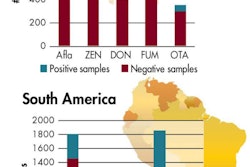The use of certain antimicrobials in animals and humans has been associated with resistance to these antimicrobials in bacteria from animals and humans. There are also important differences in the consumption of antimicrobials in animals and in humans between European countries. These are some of the findings of the first integrated analysis of data from humans, animals and food in Europe published jointly by the European Centre for Disease Prevention and Control (ECDC), the European Food Safety Authority (EFSA) and the European Medicines Agency (EMA).
The ECDC/EFSA/EMA first joint report on the integrated analysis of the consumption of antimicrobial agents and occurrence of antimicrobial resistance in bacteria from humans and food-producing animals also identifies data limitations that need to be addressed to allow further analysis and conclusions to be drawn. These include additional data on antimicrobial consumption by animal species, data on antimicrobial consumption in hospitals in more European countries and monitoring of resistant bacteria in the normal flora from both healthy and diseased people.
The analysis was carried out at the request of the European Commission and combines data from five European monitoring networks that gather information from the European Union (EU) member states, Iceland, Norway and Switzerland.
This holistic approach aims to make better use of the existing data and thus strengthen coordinated surveillance systems on antimicrobial consumption and antimicrobial resistance in human and veterinary medicine, and to allow policy makers to decide on the best way to tackle antimicrobial resistance in humans and animals.
The joint report will inform the European Commission’s action plan against the rising threats from antimicrobial resistance. The data will also contribute to establishing strong methodologies and priorities in the fight against the development of antimicrobial resistance.
This is the first in a series of reports that EMA, EFSA and ECDC are planning to publish based on the data collected by various monitoring networks.
Access to accurate data on the use of antimicrobials and the occurrence of antimicrobial resistance is an essential step to develop and monitor policies that minimize the development of resistance and keep antimicrobials effective for future generations.
















